Introduction
In the digital age, where visibility can make or break a tech company, understanding the nuances of search engine optimization (SEO) is paramount. This article delves into the multifaceted world of SEO, exploring its essential components, the distinctions between organic and paid search strategies, and the critical role it plays in enhancing online presence.
With a focus on practical insights and data-driven strategies, it highlights how tech companies can leverage SEO to attract qualified traffic and boost their credibility in a competitive landscape.
As businesses navigate the evolving dynamics of online marketing, grasping the principles of SEO becomes not just beneficial, but necessary for sustainable growth and success.
Understanding SEO: The Foundation of Search Strategies
Search Engine Optimization (SEO) includes the methods and practices aimed at enhancing a website’s visibility in organic search results across various search engines. This multifaceted approach involves optimizing critical components of a website, including:
- Content quality
- Structural integrity
- Technical configurations
to achieve higher rankings for relevant keywords. SEO for tech companies is recognized as a long-term strategy, particularly beneficial because it promotes the attraction of organic traffic—typically more sustainable and cost-effective compared to paid advertising channels.
Recent statistics indicate that 28% of searches for nearby services result in a purchase, underscoring the importance of local SEO practices in driving conversions.
A relevant case study reveals that an analysis of 1.3 million YouTube videos found a strong correlation between engagement metrics—such as comments, views, shares, and likes—and higher rankings on the platform. This emphasizes the significance of producing high-quality, engaging material to enhance visibility. Additionally, as stated by Search Engine Land, ‘On average, Google AI Overviews consist of 4,342 characters,’ highlighting the necessity for thorough material that satisfies user expectations.
Considering the newest patterns in SEO for tech companies in 2024, including the rising focus on high-quality material and user interaction, these firms must adjust their approaches to sustain visibility and relevance in a competitive market. Significantly, since the launch of Chat GPT, there has been a 33% reduction in writing jobs, which highlights the changing environment of quality and its effect on SEO. As companies maneuver through the evolving landscape of online marketing, a thorough grasp of SEO principles becomes crucial, facilitating informed decision-making about effective approaches customized for the requirements of clinic owners.
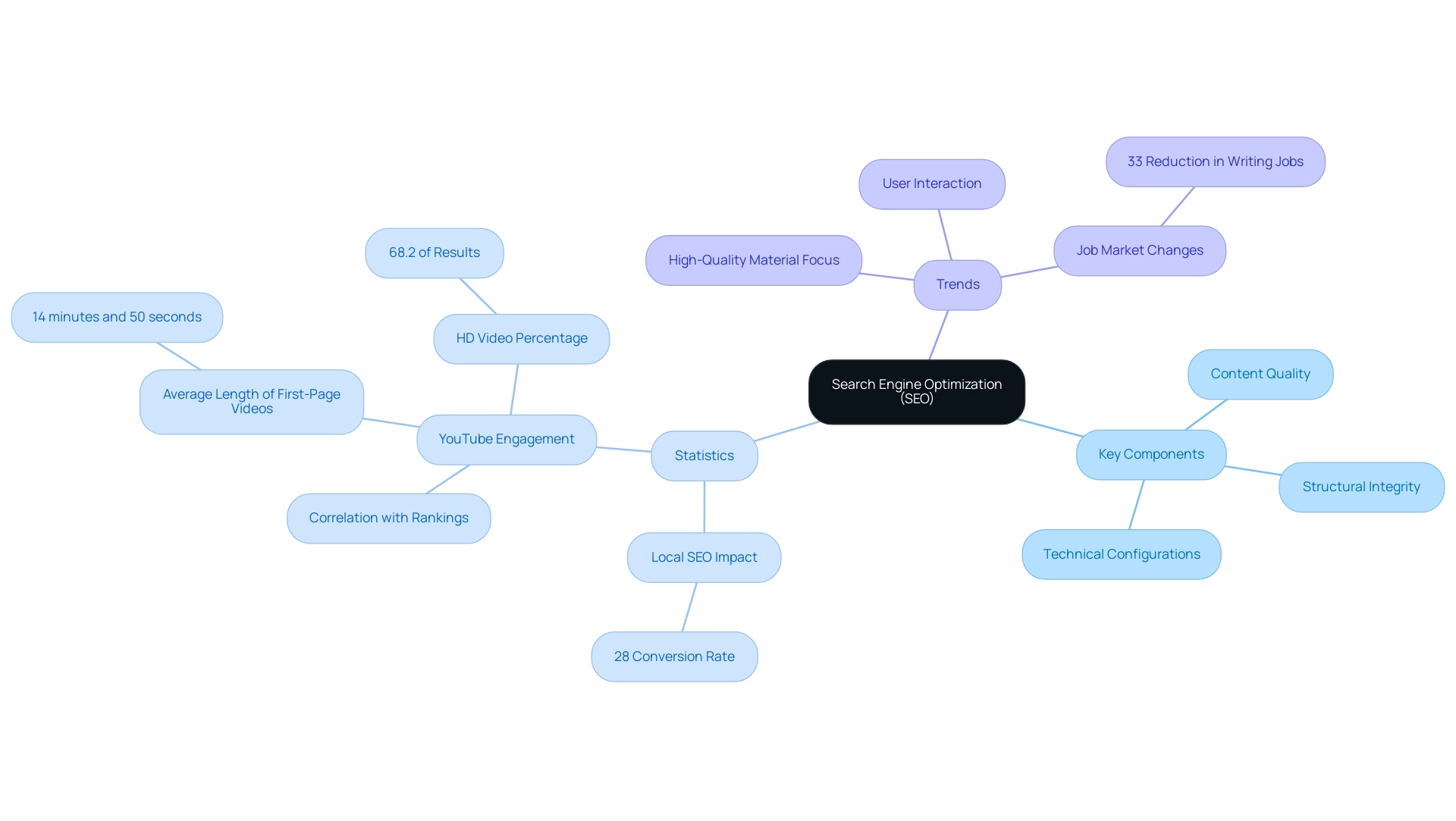
Organic vs. Paid Search: Key Differences and Similarities
Natural discovery involves the enhancement of material and website structure to improve rankings in engine results pages (SERPs) without requiring direct payment. This strategy emphasizes creating high-quality, relevant content that resonates with user intent and aligns with indexing algorithms. On the other hand, paid advertising—often referred to as Pay-Per-Click (PPC)—involves obtaining ad space on engines to secure top positions in SERPs for targeted keywords.
While organic methods foster authority and trust over time, PPC can provide immediate visibility and results. Notably, recent data indicates that 14.08% of search ad clicks are fraudulent or invalid, underscoring the importance of scrutinizing paid search effectiveness. Combining both approaches can enhance overall campaign performance, as they complement one another by maximizing reach.
In the words of Brian Dean, “These two simple methods helped Backlinko increase organic traffic to the post by 652%,” highlighting the potential benefits of a combined approach. Tech companies must carefully assess their objectives, budget, and timeline to ascertain the most suitable approach for their specific needs, particularly in relation to SEO for tech companies. The successful case study of HigherVisibility illustrates how adept management of SEO and PPC accounts can elevate a client’s status to a top online authority in the collision industry, further exemplifying the tangible benefits of a strategic blend of these methodologies.
Moreover, the incorporation of AI and chatbots is enhancing engine marketing by improving user experience and optimizing ranking algorithms, demonstrating their significance in contemporary marketing approaches.
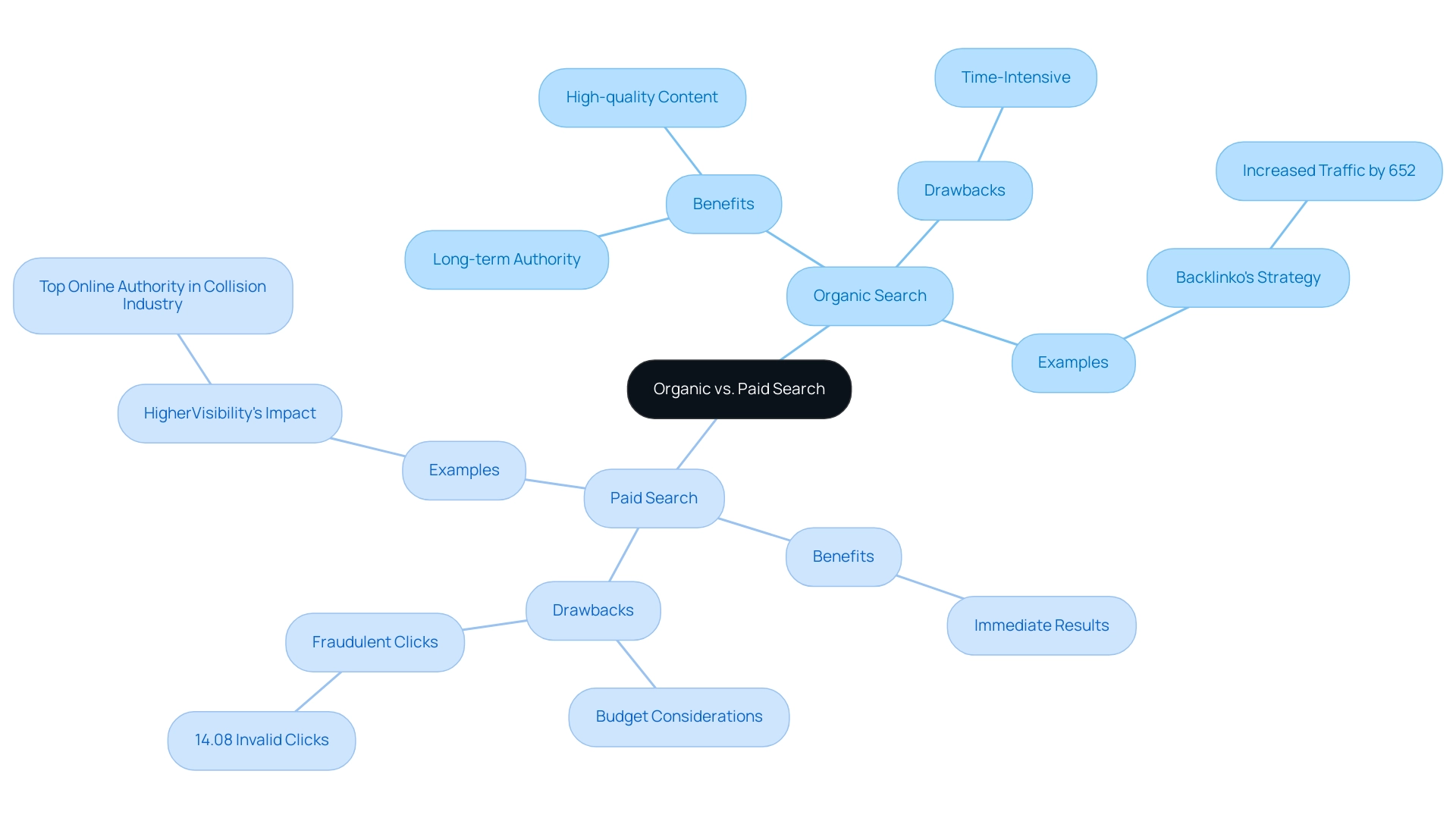
The Importance of SEO for Tech Companies
In the highly competitive technology sector, establishing a robust online presence is imperative for attracting both clients and partners. Effective SEO for tech companies is vital, as it improves their visibility in search results, thereby facilitating easier access for potential customers looking for their products and services. A well-optimized website not only enriches the user experience but also fosters credibility and trustworthiness—a vital aspect for tech firms operating in niche markets.
By targeting specific keywords relevant to their audience, companies can boost their rankings significantly, driving qualified traffic and generating valuable leads. Interestingly, industry data shows that 28% of inquiries for nearby services lead to a purchase, highlighting the significance of local SEO approaches. This statistic highlights the necessity for tech firms to optimize their online presence for local searches.
Moreover, as video material rises as a crucial factor in online engagement, companies that incorporate video into their SEO approaches can attain organic rankings 50 times more efficiently than those depending solely on text-based materials. This shift highlights the significance of adjusting SEO practices, particularly given that on average, Google AI Overviews comprise 4,342 characters, indicating that length plays a crucial role in optimization. Therefore, technology companies must embrace these evolving SEO for tech companies practices to remain competitive and visible in the digital landscape.
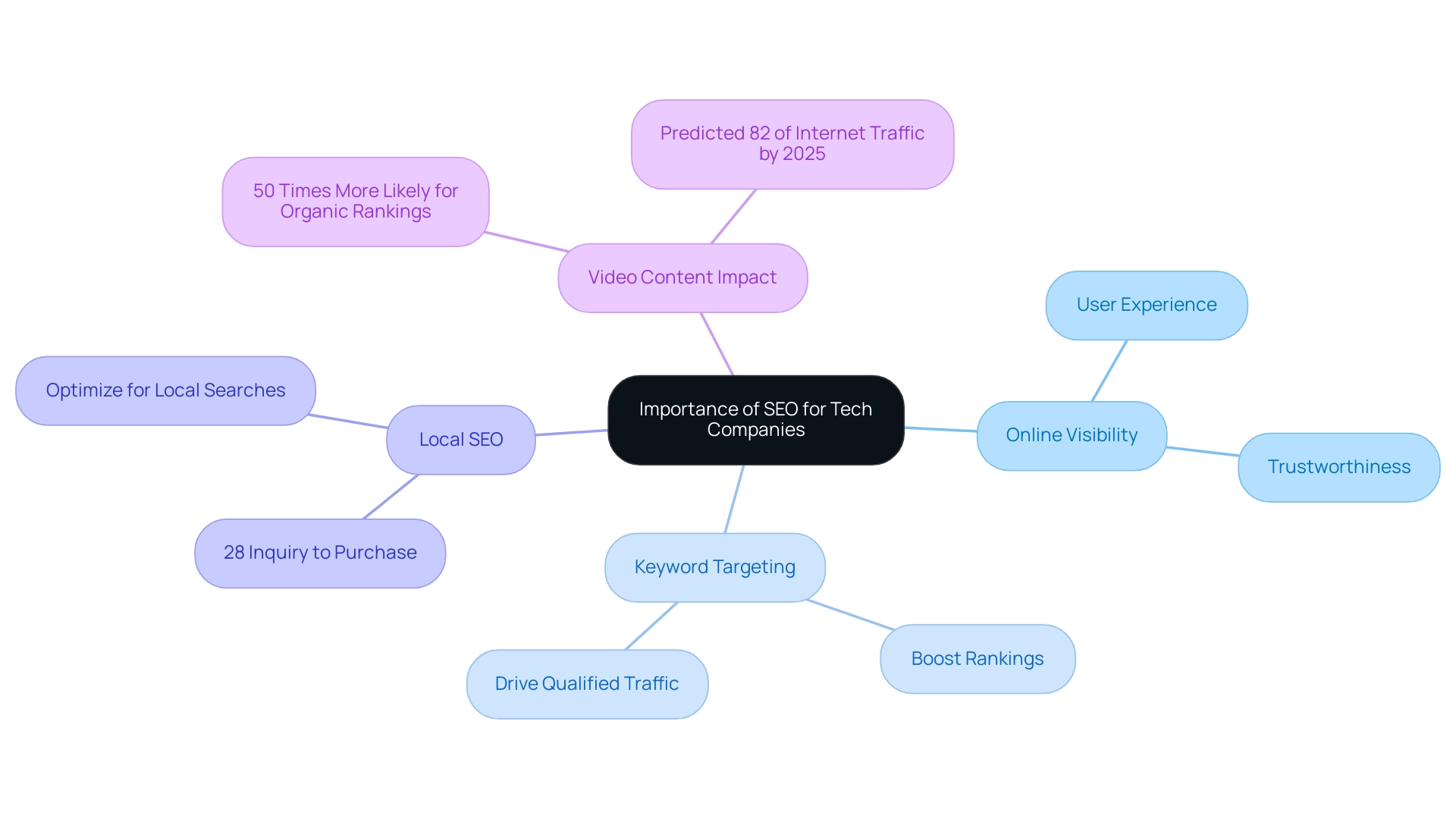
Cost Analysis: SEO vs. Paid Search Strategies
When assessing the expenses linked to SEO and PPC, it is crucial to acknowledge that SEO usually requires a longer-term investment approach. This strategy encompasses elements such as content creation, technical optimization, and ongoing maintenance. Although the initial expenses of implementing SEO can be substantial, the potential for organic traffic generation often translates into a more favorable return on investment (ROI) over time.
In contrast, paid advertising campaigns can deliver immediate traffic; however, they incur continuous costs that can quickly escalate. Recent reports indicate that PPC campaigns generally yield an average ROI of $2 for every $1 spent, yet they convert at a rate of only 1.3%, significantly lower than the 2.4% conversion rate associated with SEO advertising, which benefits from the trust and credibility established by organic search results. Notably, 12% of advertisers’ budgets are dedicated to paid social media, highlighting the significance of PPC in marketing plans.
For tech companies, it is crucial to carefully consider their specific marketing goals, budget constraints, and the anticipated duration of their campaigns when implementing SEO for tech companies and choosing between these two advertising approaches. The case study titled ‘Pros and Cons of SEO‘ illustrates that SEO is a complex field requiring a long-term strategy and ongoing effort to drive sustainable growth and brand awareness. A balanced marketing approach that effectively combines the strengths of both SEO and PPC may ultimately lead to the most successful outcomes, maximizing visibility and driving sustainable growth.
Furthermore, average costs for SEO for tech companies can vary widely, but understanding these costs is vital for making informed decisions.
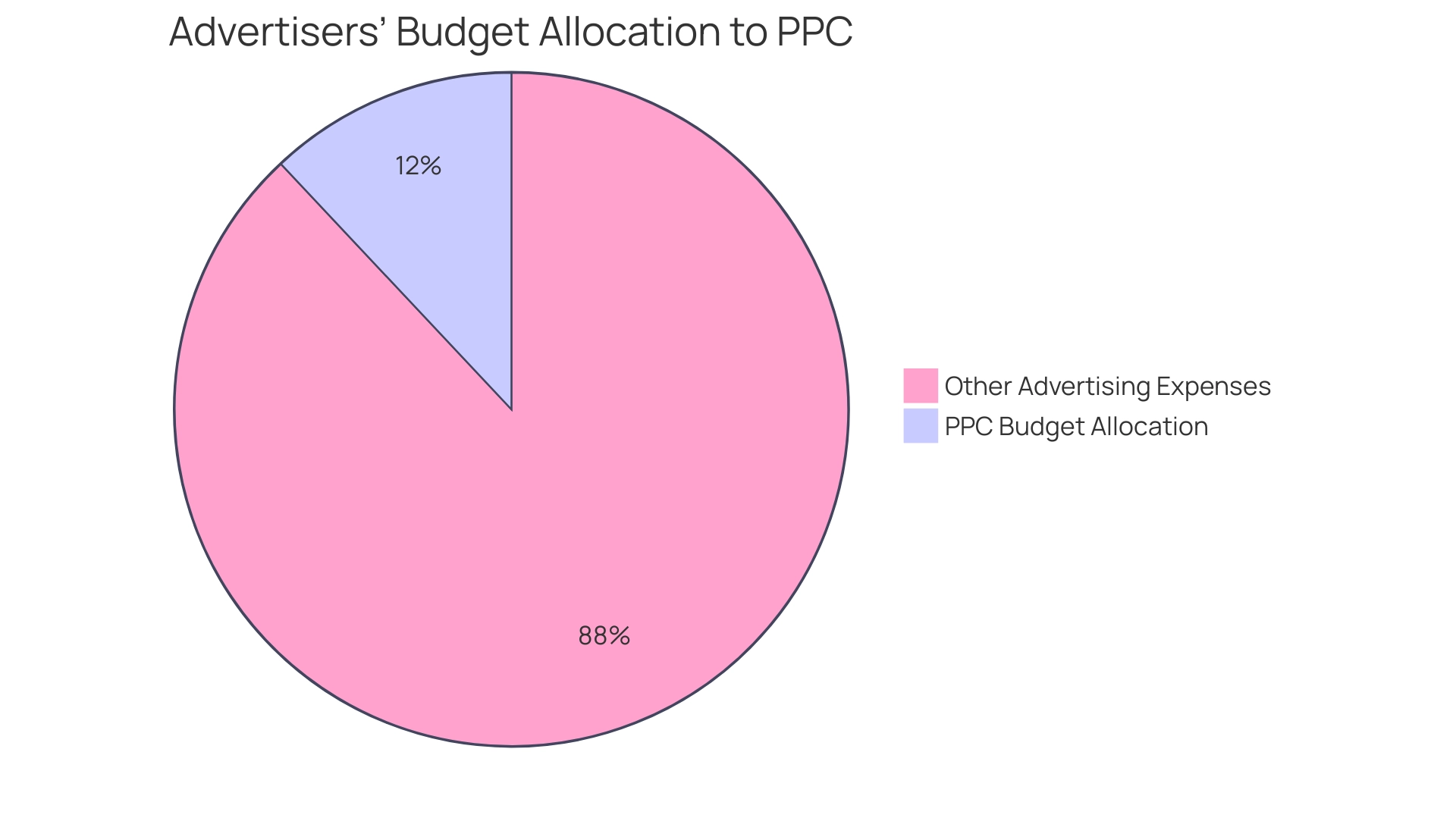
Leveraging Content Marketing to Boost SEO Performance
Content marketing serves as a pivotal mechanism for enhancing SEO performance, particularly in the competitive landscape of SEO for tech companies. Search engines increasingly prioritize high-quality and relevant material in their ranking algorithms, making it imperative for businesses to develop informative articles, whitepapers, and case studies. Such material not only attracts potential customers but also strengthens a company’s authority within its industry.
Aligning material with user intent and strategically incorporating targeted keywords can significantly enhance a company’s chances of achieving higher rankings in search engine results pages (SERPs). Furthermore, high-quality material fosters social sharing and generates backlinks, which are vital for bolstering SEO efforts. Indeed, a recent examination emphasized that 75% of searchers do not go beyond the first page of results, highlighting the importance of effective approaches.
Moreover, when exposed to brand messages on LinkedIn, individuals are six times more likely to convert, demonstrating the tangible impact of well-crafted marketing. It is also significant to mention that, contrary to common belief, there is no connection between YouTube rankings and keyword-optimized video descriptions, as indicated by Backlinko, which offers a differing viewpoint on optimization approaches. Lastly, the case study titled ‘Emerging SEO Trends’ emphasizes the rapidly evolving nature of SEO, highlighting the need for marketers to stay updated with trends to adapt their strategies effectively.
A well-crafted content marketing plan that emphasizes both quality and relevance is essential for maximizing SEO for tech companies in 2024 and beyond.
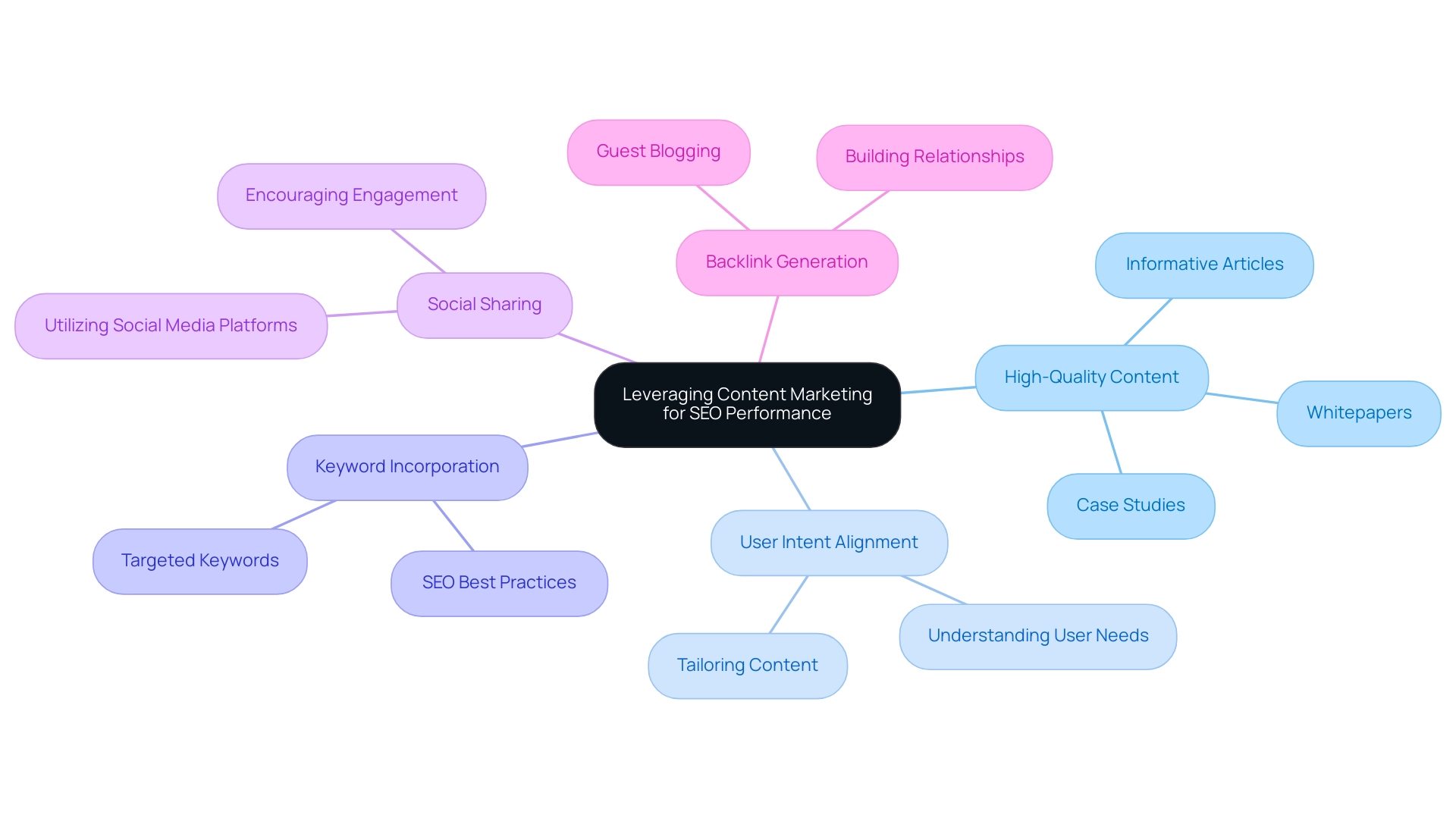
Conclusion
Understanding the intricacies of SEO is crucial for tech companies seeking to enhance their online visibility and attract qualified traffic. As outlined, SEO involves a comprehensive approach that blends:
- Technical optimization
- High-quality content creation
- Effective keyword targeting
The distinction between organic and paid search strategies reveals that while PPC offers immediate results, SEO fosters long-term credibility and sustainable growth. The data demonstrates that organic traffic not only converts at a higher rate but also establishes trust with users, making it a more cost-effective strategy in the long run.
The importance of local SEO cannot be overstated, particularly for tech firms aiming to capture nearby customers. With a significant percentage of local searches resulting in purchases, optimizing for local visibility is a strategic necessity. Furthermore, integrating content marketing into SEO efforts amplifies performance by:
- Driving engagement
- Building authority within the industry
Quality content not only enhances search rankings but also encourages social sharing and backlinks, which are vital for improving overall SEO effectiveness.
In conclusion, as the digital landscape continues to evolve, tech companies must prioritize a holistic SEO strategy that aligns with their business goals. By embracing both organic and paid search methodologies, leveraging content marketing, and focusing on local SEO, businesses can position themselves for success in a competitive market. The investment in SEO is not merely a tactical choice but a foundational element for sustainable growth and enhanced online presence in the tech industry.

